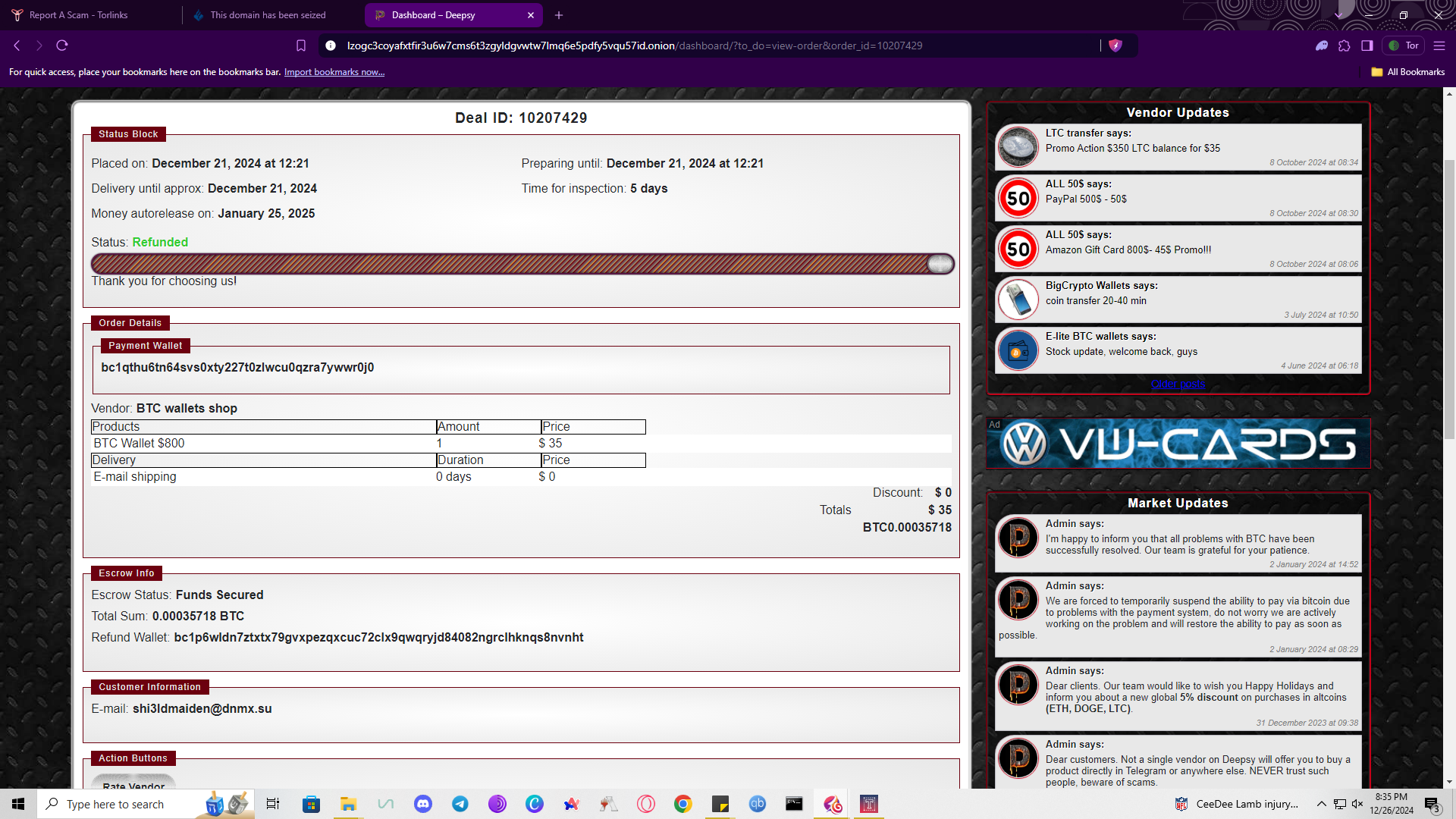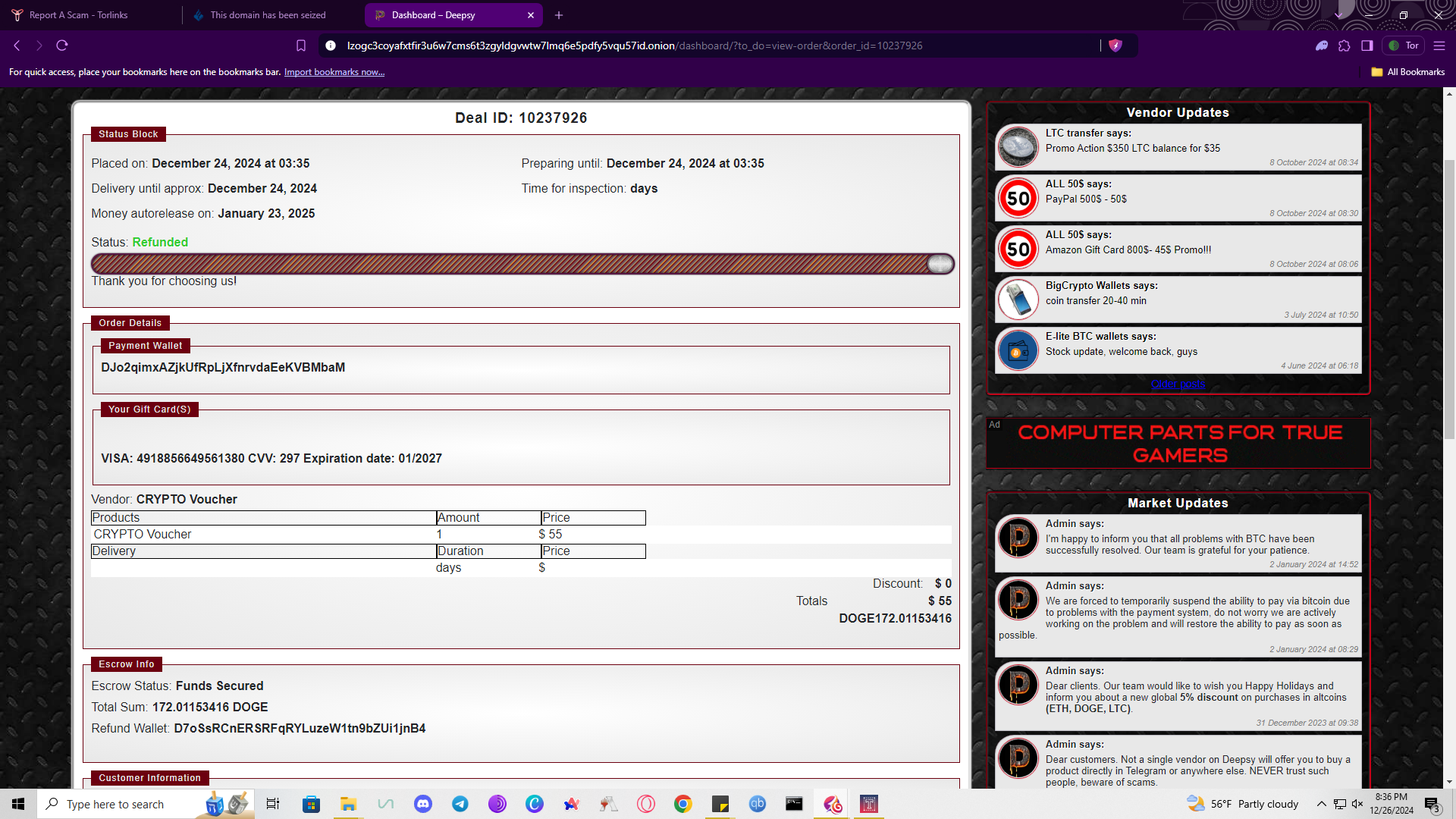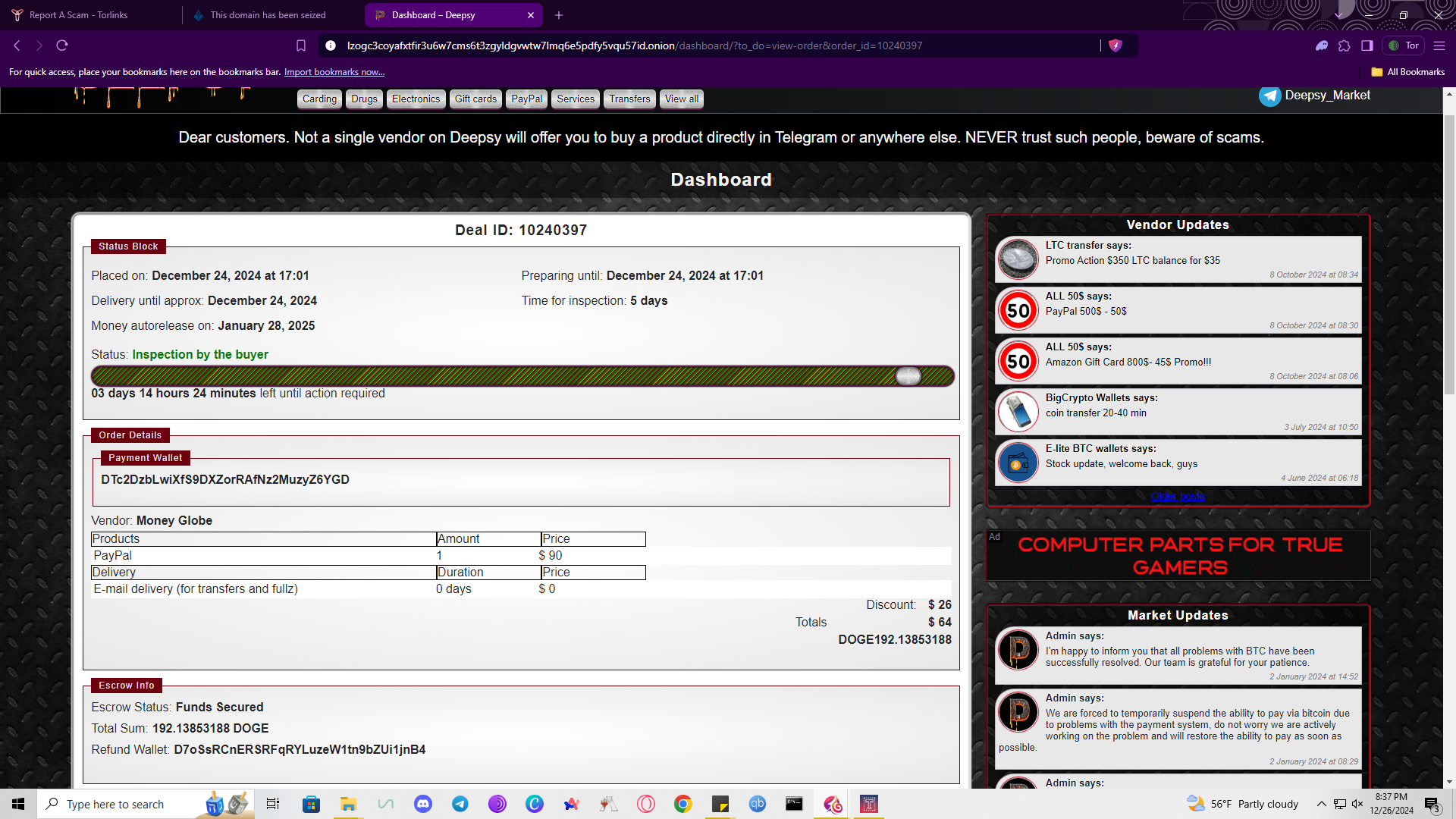Table of Contents
ToggleDeepsy – TOR Scam Report (39)
Onion Link : http://lzogc3coyafxtfir3u6w7cms6t3zgyldgvwtw7lmq6e5pdfy5vqu57id.onion/
Scam Report Date : 2024-12-26
Client Scam Report Breakdown
Original Scam Report :
The client reported making multiple purchases on a marketplace that promised the security of an escrow service. However, none of the purchased items were delivered, and no refunds were issued. The client provided proof of the transactions and subsequent fraud through a series of images. This pattern of behavior indicates a clear breach of trust and fraudulent activity by the vendor or platform. This concise statement highlights the core grievance—the misuse or absence of an escrow system, a crucial safeguard against scams in online transactions.
Photos :

Terminology and Concepts Defined
- Escrow Service: In the context of online marketplaces, an escrow service is a third-party system that holds payment from a buyer until the goods or services are delivered. This setup protects both parties by ensuring the seller is paid only after the buyer confirms receipt of the product. The client’s complaint about the promised but ineffective escrow service indicates either a misrepresentation or non-functional system, which is a common tactic in fraudulent operations.
- Proof in Images: This refers to the visual evidence provided by the client to substantiate their claims. These images typically include screenshots of order confirmations, payment records, and communication with the vendor or platform. Such evidence is critical for corroborating scam reports and can be instrumental in investigations or dispute resolutions.
- Refund Policy: Many legitimate marketplaces offer clear refund policies to address issues such as non-delivery or defective goods. The absence of refunds in this case demonstrates the platform’s lack of accountability and further supports the claim of fraudulent practices.
Implications and Recommendations
This report underscores several red flags that potential buyers should heed when engaging with online marketplaces. The failure to deliver goods despite utilizing an escrow system suggests either the escrow service was a facade or it was compromised. Additionally, the refusal to issue refunds is a blatant disregard for consumer protection norms. To mitigate such risks, users should verify the credibility of the escrow service and the marketplace’s dispute resolution mechanisms before making purchases. Regulatory authorities and consumer protection agencies may use reports like this to identify patterns of fraud and hold culpable parties accountable.
Clients are encouraged to provide detailed evidence alongside their reports, as this client did with images, to strengthen their claims. Future users can learn from this incident to exercise greater caution, such as conducting small test transactions or engaging with sellers with verified histories of successful transactions.











